Menu
Physics Lesson 15.2.4 - Combination of Resistors
Please provide a rating, it takes seconds and helps us to keep this resource free for all to use
Welcome to our Physics lesson on Combination of Resistors, this is the fourth lesson of our suite of physics lessons covering the topic of Electric Resistance. Combinations of Resistors, you can find links to the other lessons within this tutorial and access additional physics learning resources below this lesson.
Combination of Resistors
As you remember in capacitors, we explained that it is possible change the capacitance of a system by combining two or more capacitors in series or in parallel. This is because capacitors have fixed values but the circuit may require a different capacitance.
Similarly, we can combine two or more resistors in series or in parallel to change the resistance of a circuit. Let's explain what happens during these combinations.
a. Series combination of resistors
If two or more resistors are connected in series, they are permeated by the same current.
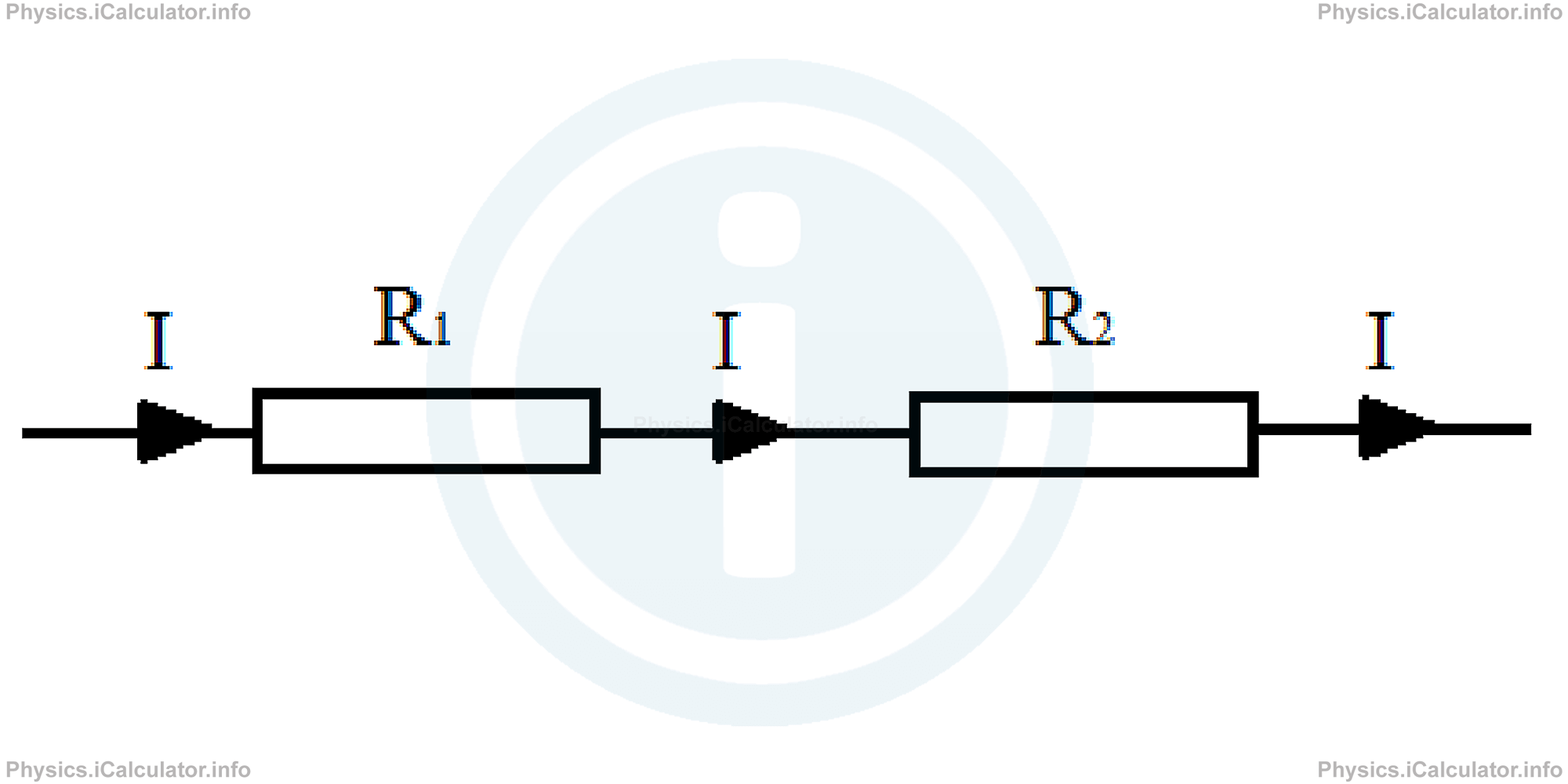
As a result, electrons encounter resistance in two successive positions. This causes an accumulative effect in the total (otherwise known as "equivalent") resistance, Req of the circuit, i.e.
Therefore, we can replace the two above resistors connected in series by a single resistor whose resistance is the mathematical sum of each single resistor.
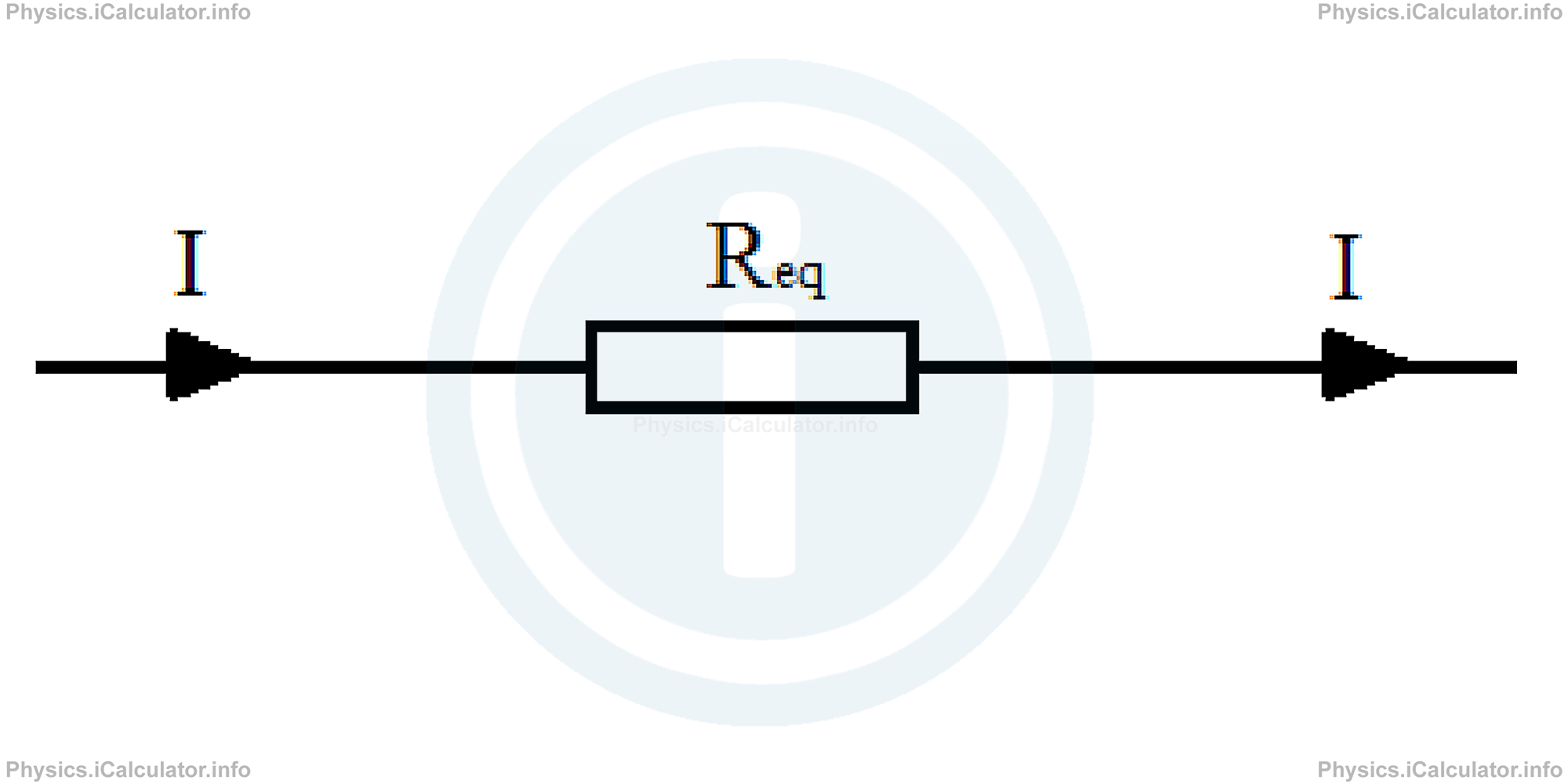
Example 2
Five resistors of resistance 2Ω, 8Ω, 6Ω, 12Ω and 10Ω are connected in series, as shown in the figure.
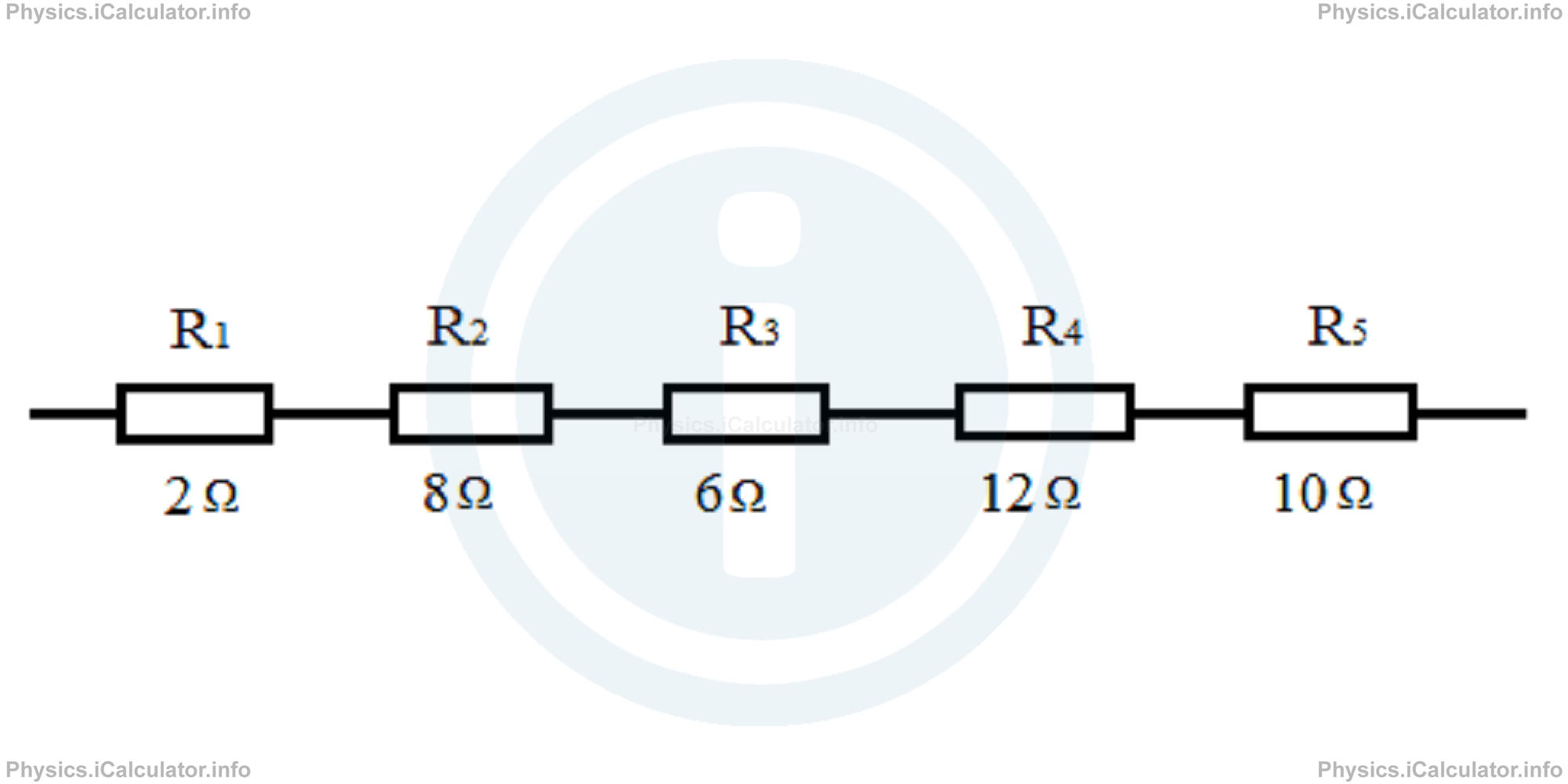
What is the equivalent resistance of this branch of resistors?
Solution 2
We just have to add all individual resistors to calculate the resistance of this series branch. Thus,
= 2Ω + 8Ω + 6Ω + 12Ω + 10Ω
= 38Ω
This is the equivalent figure: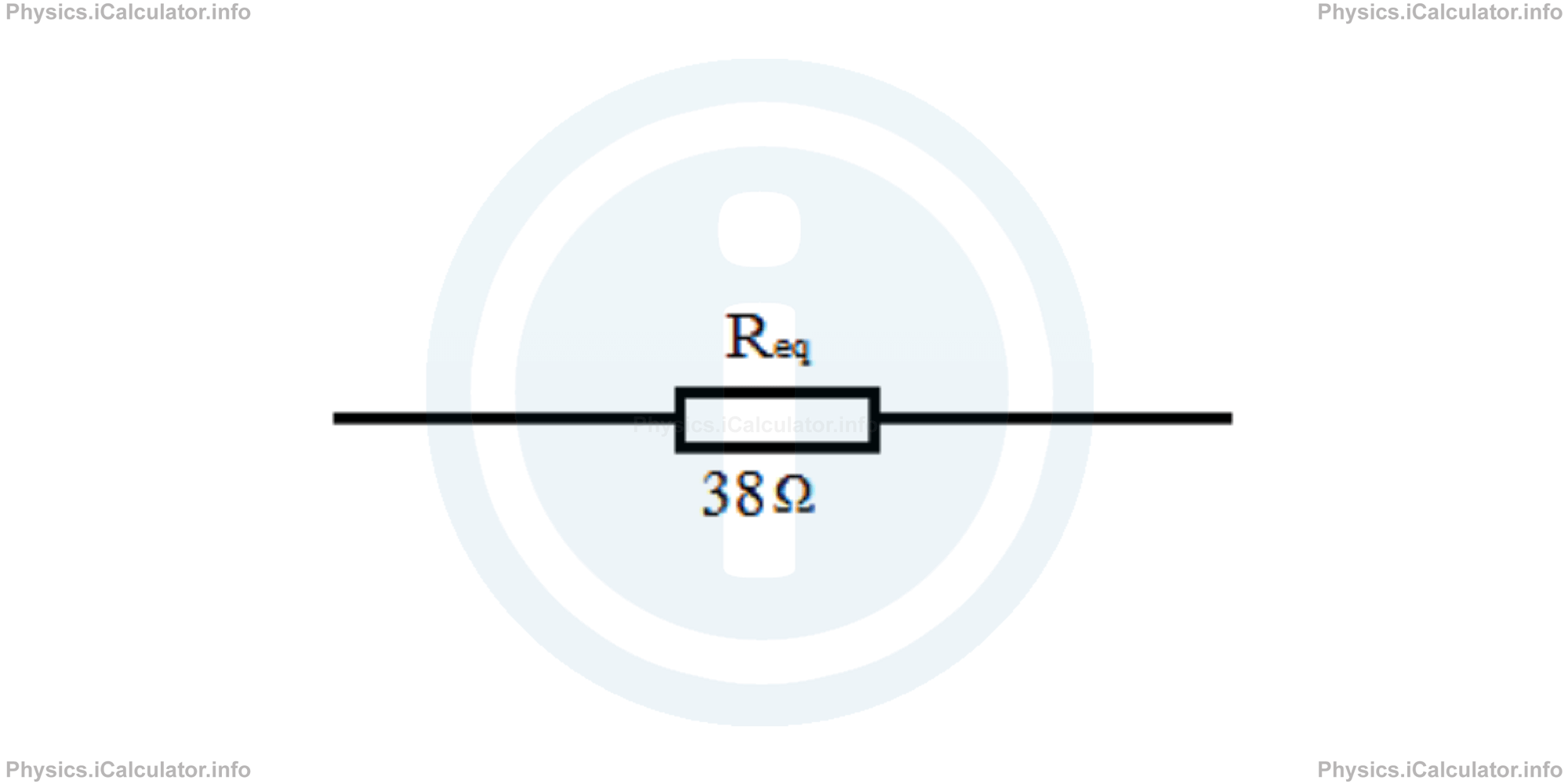
As you see, the equivalent resistance of a series combination of resistors gives a higher resistance than that of each single resistor. Therefore, a series setup is used when we want to increase the resistance of a circuit and the resistors available are small.
The equation used for a series combination of resistors is analogue to the equations used for parallel combination of springs or capacitors.
b. Parallel combination of resistors
A parallel setup is when there are at least two branches containing one or more resistors each, as shown in the figure below.
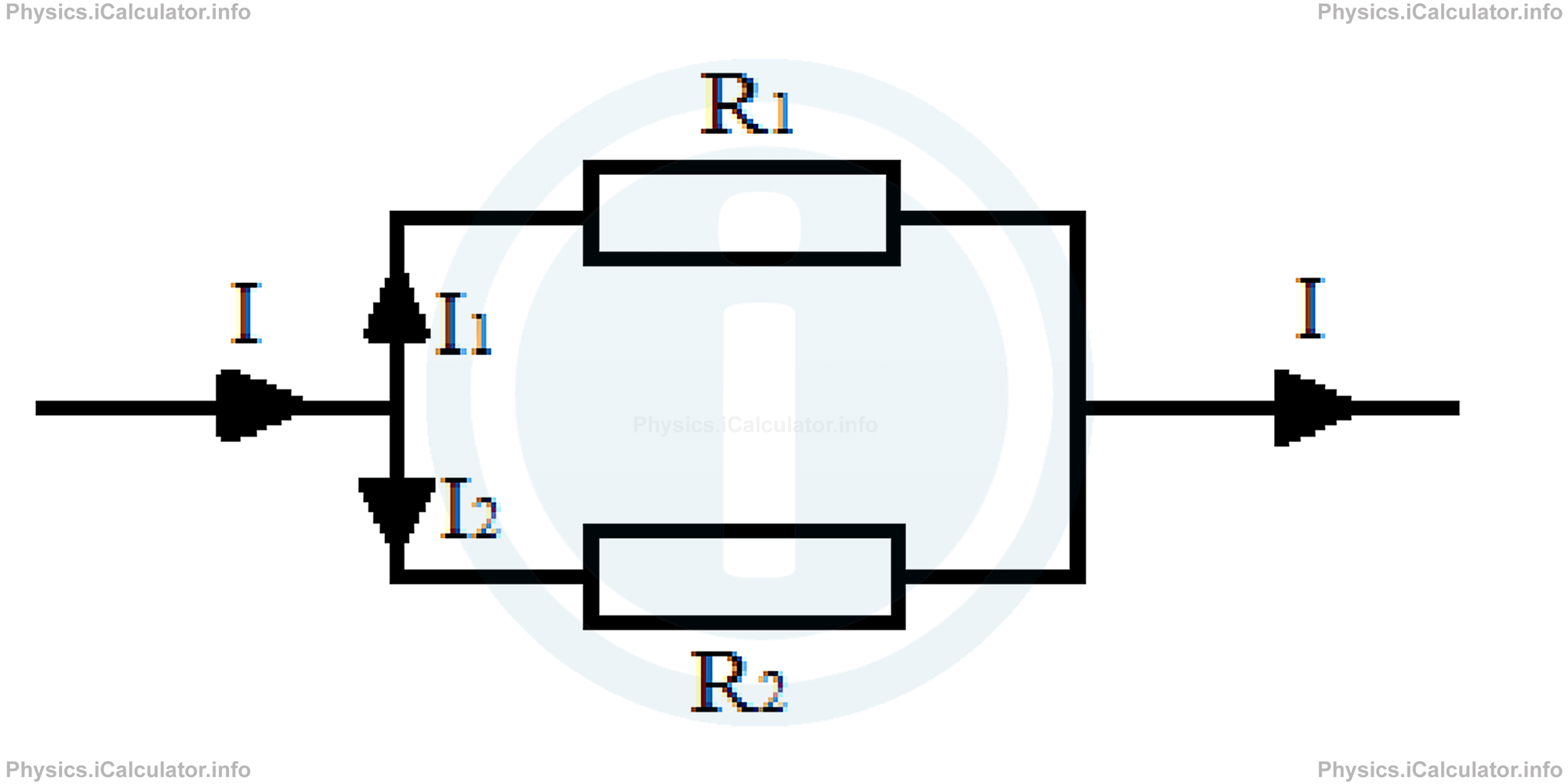
In a parallel setup the current comes as a whole from the source, then it divides into two smaller currents I1 and I2 flowing through the resistors R1 and R2 respectively. As a result, the equivalent resistance of a parallel setup is smaller than the resistance of each single resistor, as electric charges flow easier through two resistors than if there it was a single resistor. The concept of equivalent resistance is used to ease the study of such situations as in this case we assume it was only a single resistor in a single branch, as shown below.
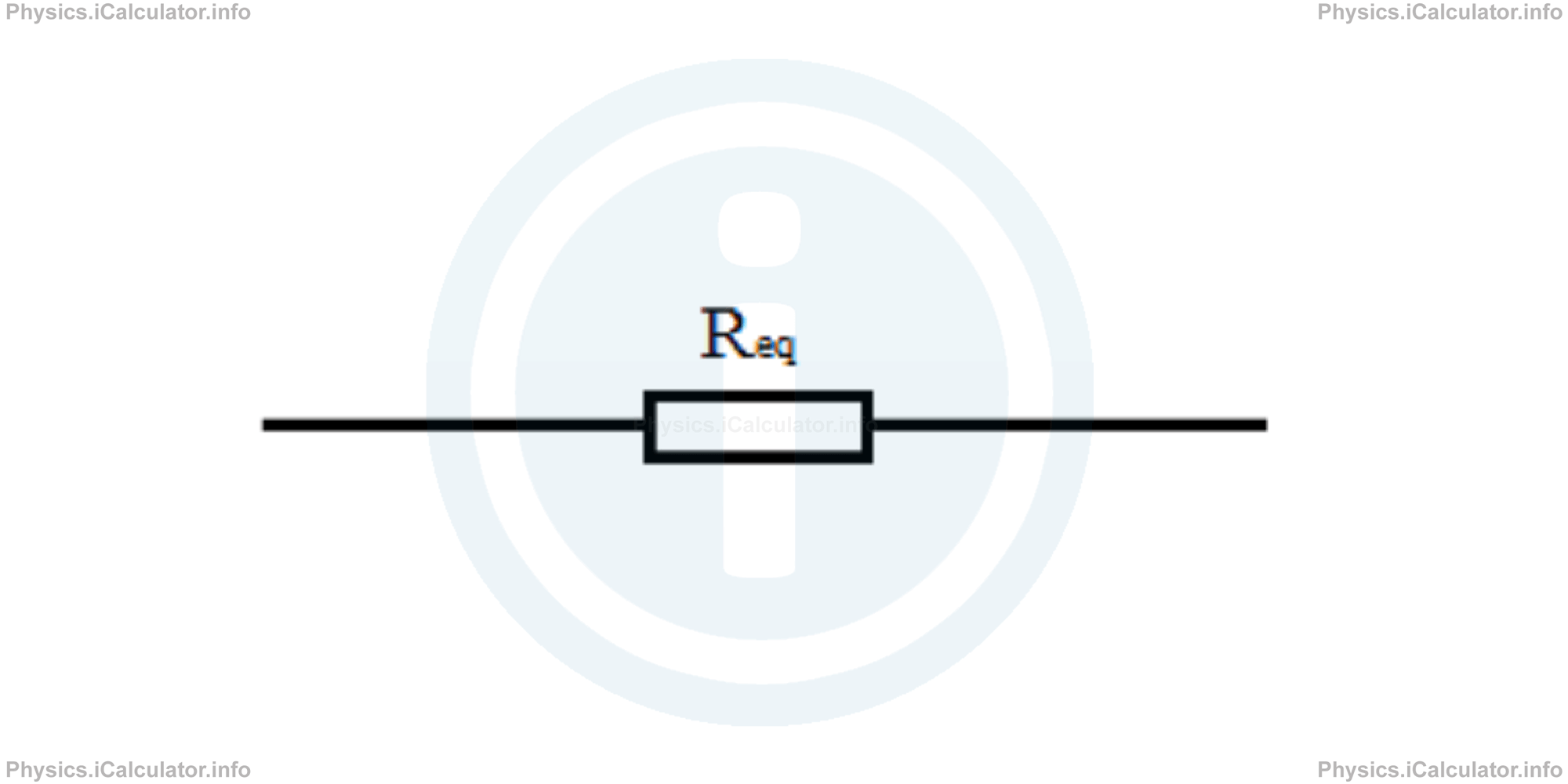
This situation (of parallel setup of resistors) is analogue to when there are two bridges built across the same river. The traffic in each bridge is less intense than if there was a single bridge.
The equation for the equivalent resistance of a parallel setup is
(we will show the proof of this equation in the next tutorial). This equation is analogue to the equation used for series combination of springs or capacitors.
Example 3
Two resistors R1 = 24 Ω and R2 = 36 Ω are connected in parallel, as shown in the figure.
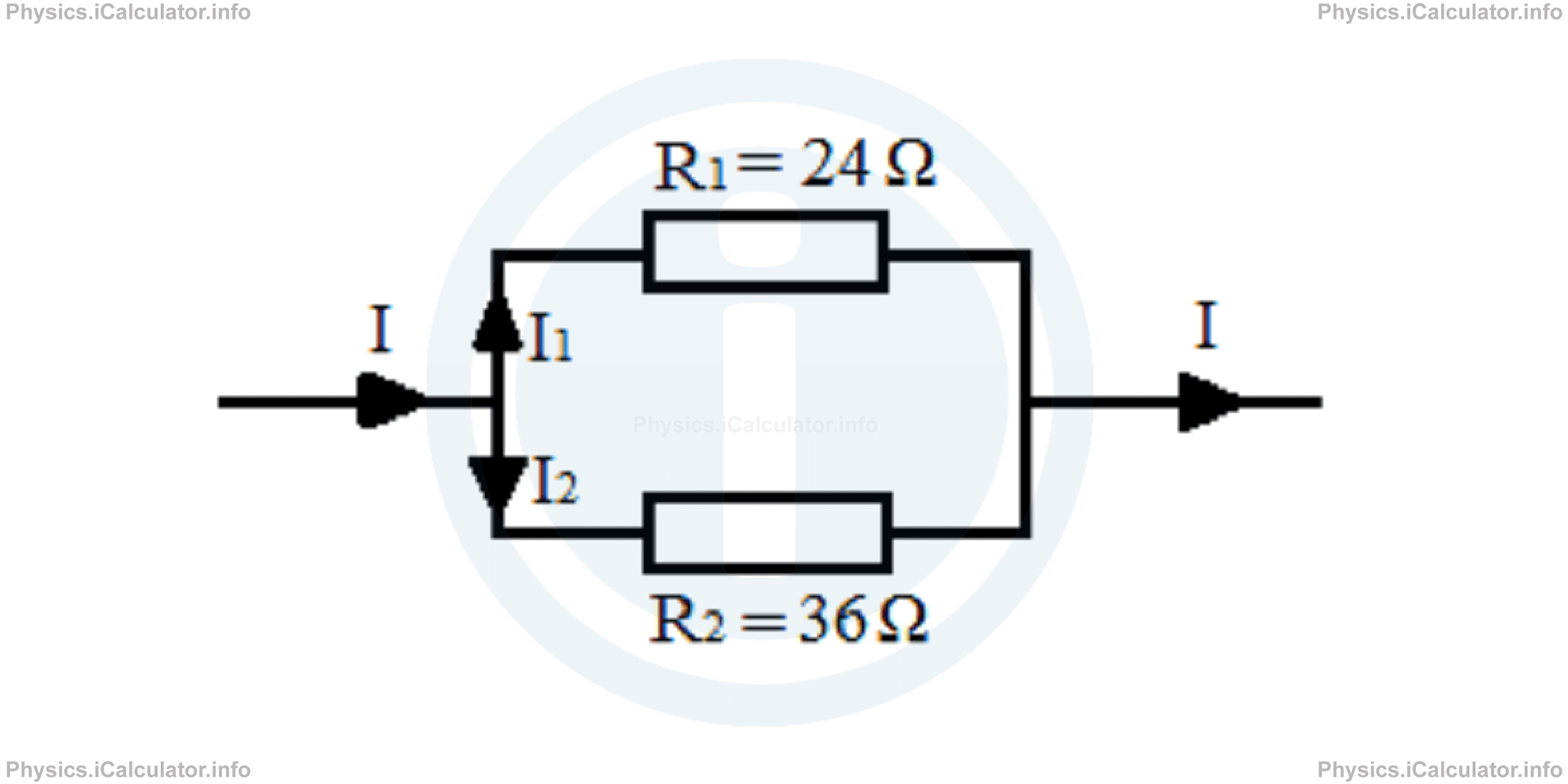
Solution 3
Using the equation of the parallel combination of resistors, we obtain
1/Req = 1/24 + 1/36
1/Req = 3/72 + 2/72
1/Req = 5/72
Req = 72/5 Ω
Req = 14.4 Ω
c. Complex combination of resistors
This kind of setup is composite; it takes place when resistors are combined both in series and in parallel in the same circuit. In these cases, the equivalent resistance is calculated in steps (stages) and we start calculating it from the innermost part of the setup. Let's consider an example to clarify this point.
Example 4
Four resistors, R1 = 12 Ω, R2 = 18 Ω, R3 = 10 Ω and R4 = 7 Ω are placed in a circuit as shown in the figure below.
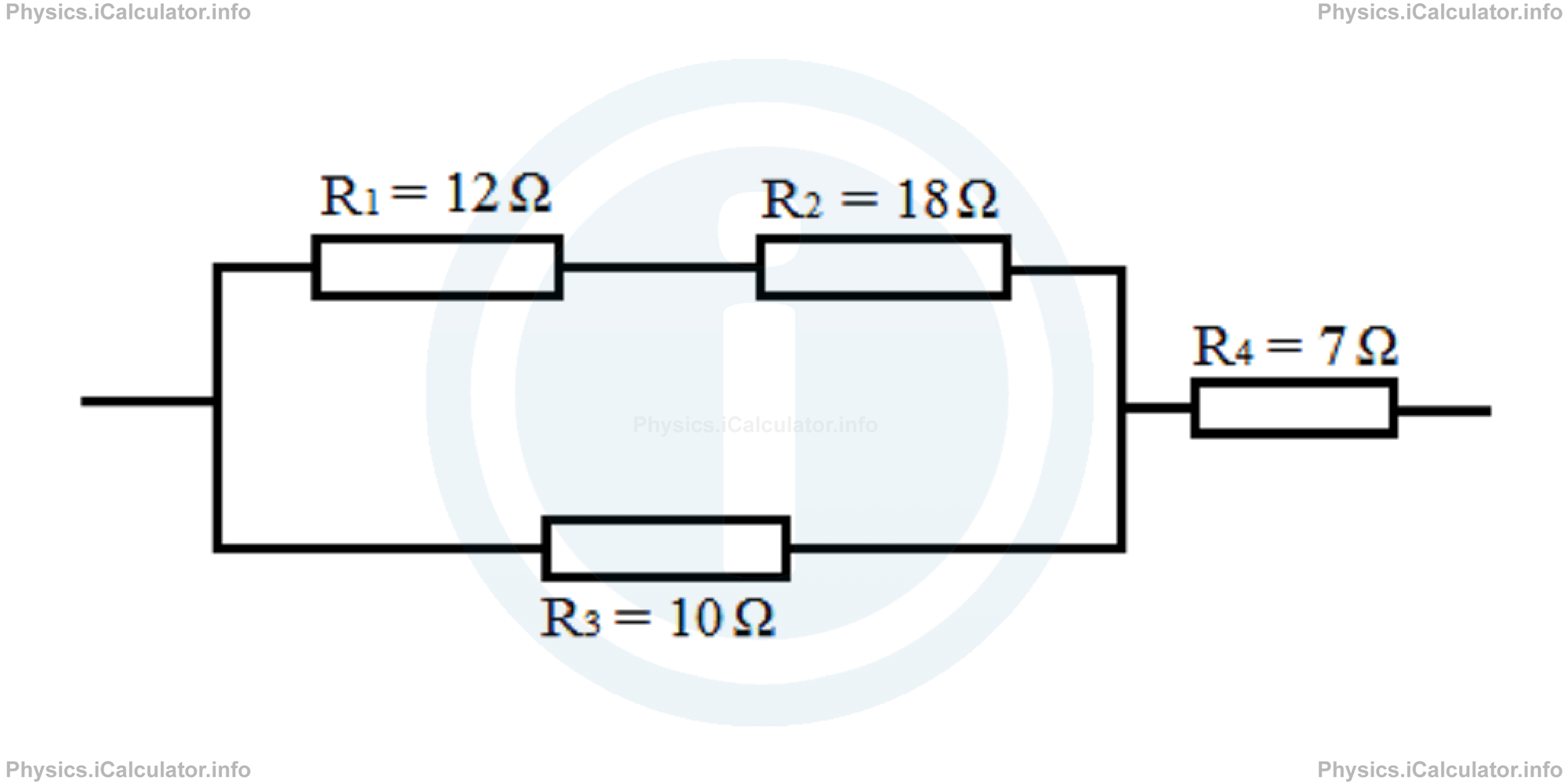
Calculate the equivalent resistance of the entire setup.
Solution 4
The innermost part of the setup is the series combination of R1 and R2 as we cannot continue with the rest without finding the equivalent resistance of this part first. Thus, we have
= 12Ω + 18Ω
= 30Ω
Thus, we obtain the following simplified equivalent figure:
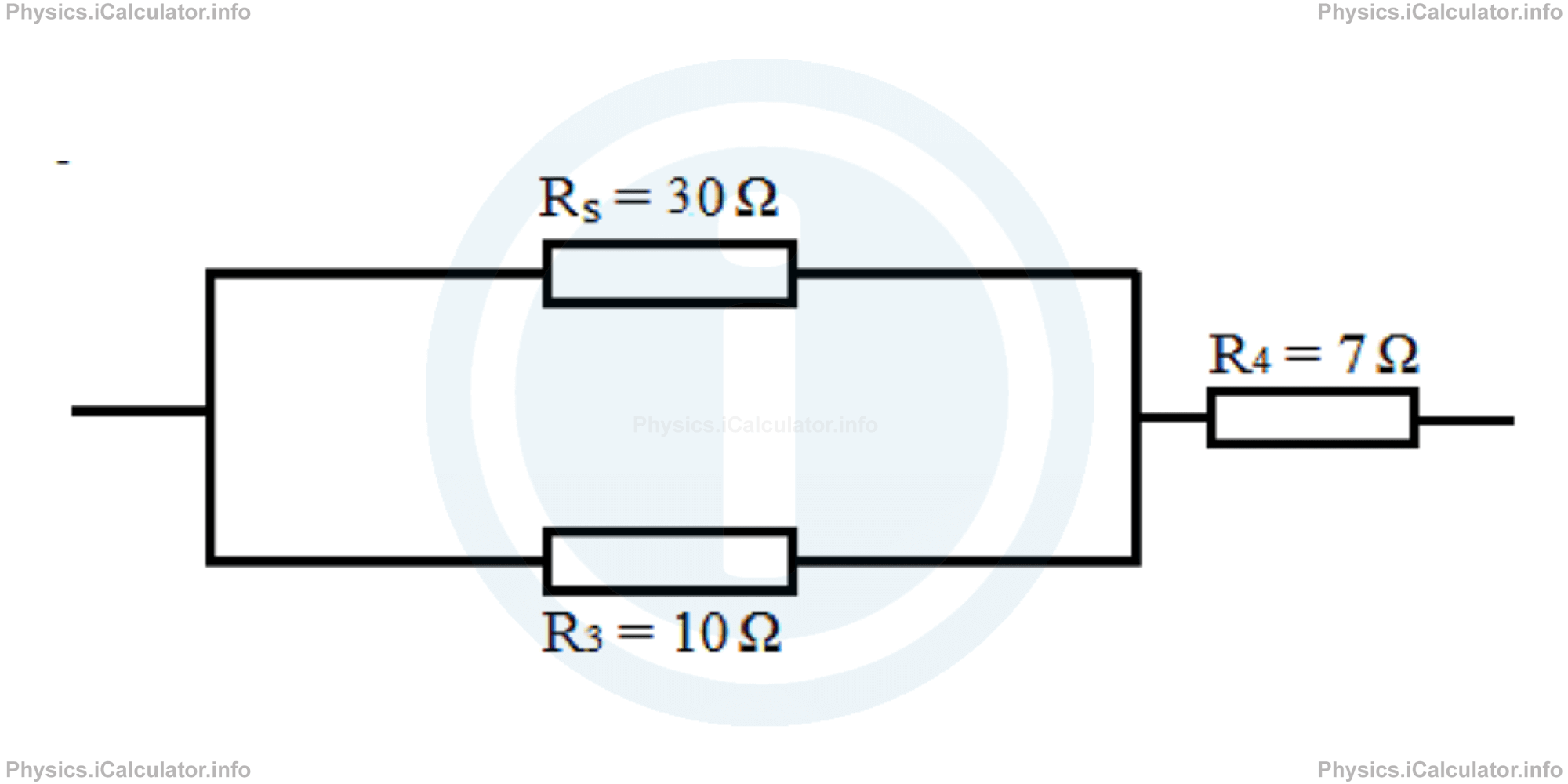
Now, we continue with the parallel part of the setup. We have:
1/Rp = 1/30 + 1/10
1/Rp = 1/30 + 3/30
1/Rp = 4/30
Rp = 30/4 Ω
Rp=7.5Ω
Again, we can draw the simplified equivalent setup to have a better understanding of the situation.
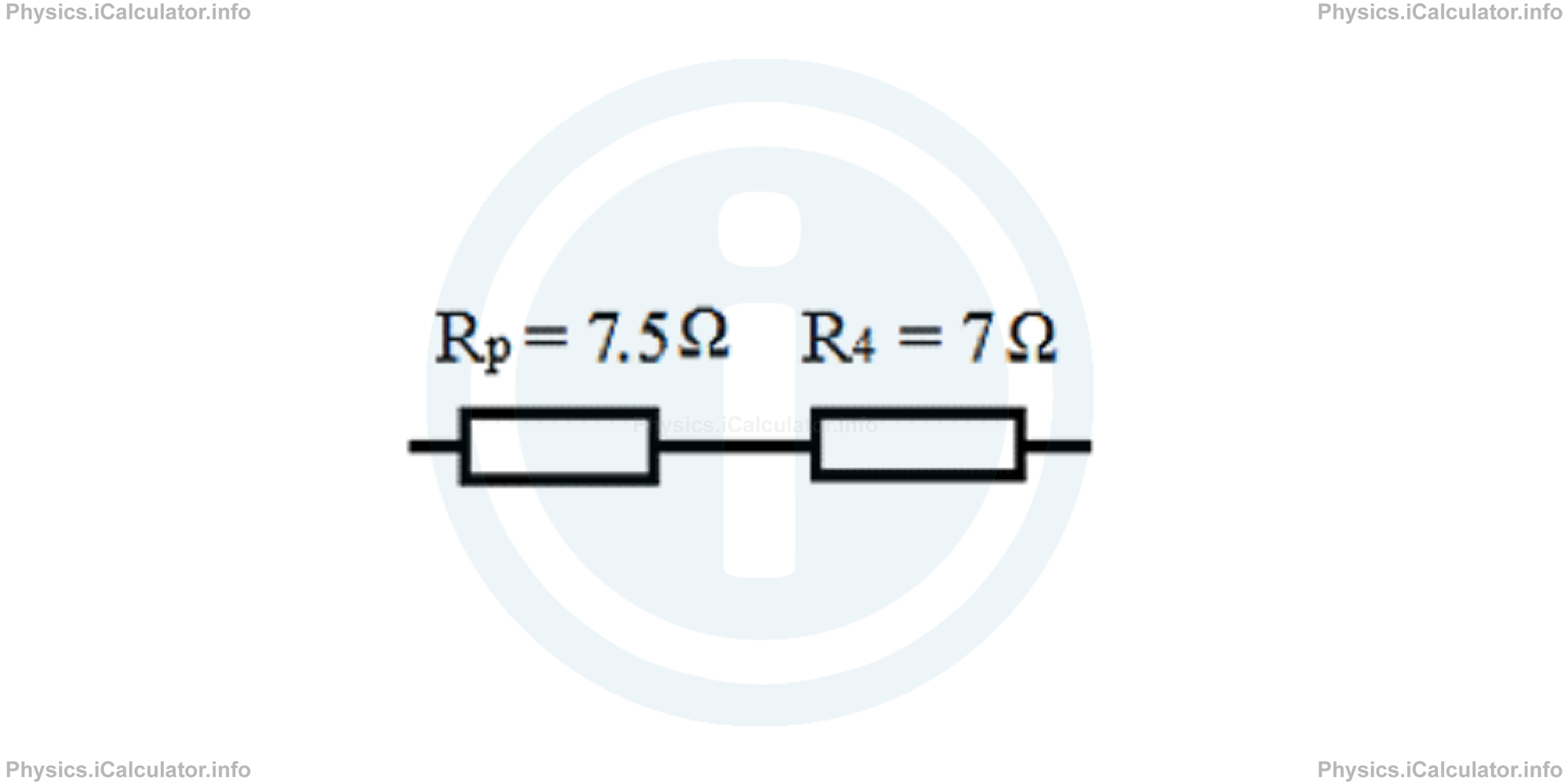
As you see, now there is only a series setup to calculate. Hence, we obtain for the equivalent resistance of the entire circuit:
= 7.5Ω + 7Ω
= 14.5Ω
You have reached the end of Physics lesson 15.2.4 Combination of Resistors. There are 5 lessons in this physics tutorial covering Electric Resistance. Combinations of Resistors, you can access all the lessons from this tutorial below.
More Electric Resistance. Combinations of Resistors Lessons and Learning Resources
Whats next?
Enjoy the "Combination of Resistors" physics lesson? People who liked the "Electric Resistance. Combinations of Resistors lesson found the following resources useful:
- Combination Resistors Feedback. Helps other - Leave a rating for this combination resistors (see below)
- Electrodynamics Physics tutorial: Electric Resistance. Combinations of Resistors. Read the Electric Resistance. Combinations of Resistors physics tutorial and build your physics knowledge of Electrodynamics
- Electrodynamics Revision Notes: Electric Resistance. Combinations of Resistors. Print the notes so you can revise the key points covered in the physics tutorial for Electric Resistance. Combinations of Resistors
- Electrodynamics Practice Questions: Electric Resistance. Combinations of Resistors. Test and improve your knowledge of Electric Resistance. Combinations of Resistors with example questins and answers
- Check your calculations for Electrodynamics questions with our excellent Electrodynamics calculators which contain full equations and calculations clearly displayed line by line. See the Electrodynamics Calculators by iCalculator™ below.
- Continuing learning electrodynamics - read our next physics tutorial: Electric Potential Difference (Voltage). Ohm's Law
Help others Learning Physics just like you
Please provide a rating, it takes seconds and helps us to keep this resource free for all to use
We hope you found this Physics lesson "Electric Resistance. Combinations of Resistors" useful. If you did it would be great if you could spare the time to rate this physics lesson (simply click on the number of stars that match your assessment of this physics learning aide) and/or share on social media, this helps us identify popular tutorials and calculators and expand our free learning resources to support our users around the world have free access to expand their knowledge of physics and other disciplines.
Electrodynamics Calculators by iCalculator™
- Amount Of Substance Obtained Through Electrolysis Calculator
- Charge Density Calculator
- Electric Charge Stored In A Rc Circuit Calculator
- Electric Field In Terms Of Gauss Law Calculator
- Electric Power And Efficiency Calculator
- Electron Drift Velocity Calculator
- Equivalent Resistance Calculator
- Force Produced By An Electric Source Calculator
- Joules Law Calculator
- Ohms Law Calculator
- Potential Difference In Rc Circuit Calculator
- Resistance Due To Temperature Calculator
- Resistance Of A Conducting Wire Calculator